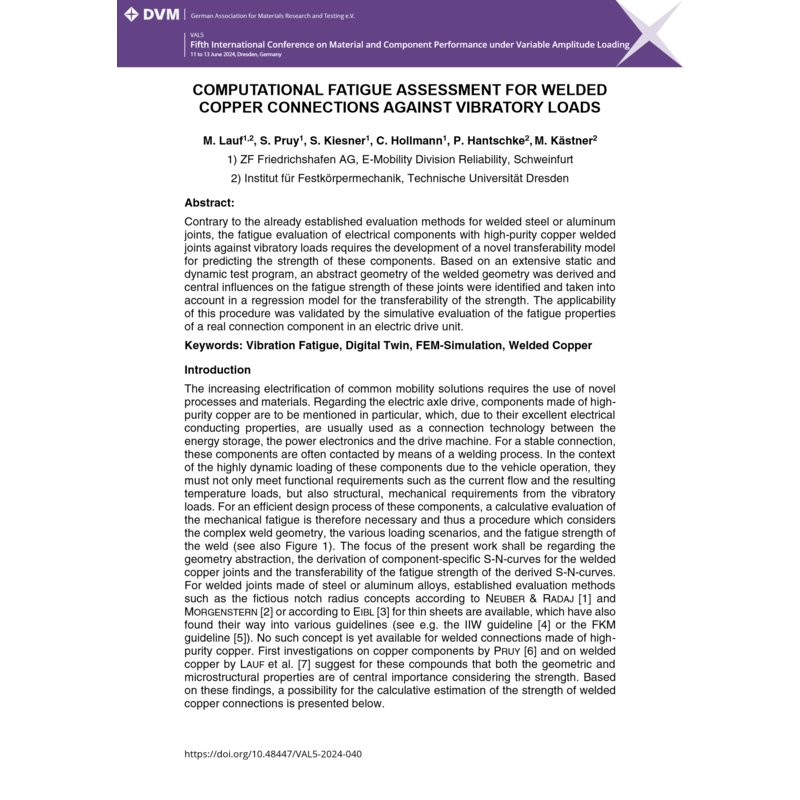- Online only



For the reliable design of electric drive systems, electrical subcomponents with filigree welded joints made of high-purity copper have to be evaluated. A suitable concept for the computational fatigue assessment of these special compounds against high-frequency vibratory loads is not known to date. The established methods of weld strength analysis cannot be applied with certainty due to the strong coupling between stress and strength resulting from the novel material. In particular, the computational estimation of the strength presents a particular challenge due to the strong influences of the local weld geometry and the thermally modified microstructure; see also: Lauf [1] and Kaffenberger [2].
The aim of the presentation is to present a closed computational fatigue…

Datenschutzbedingungen (bearbeiten im Modul "Kundenvorteile")

Lieferbedingungen (bearbeiten im Modul "Kundenvorteile")

Rücksendebedingungen (bearbeiten im Modul "Kundenvorteile")
For the reliable design of electric drive systems, electrical subcomponents with filigree welded joints made of high-purity copper have to be evaluated. A suitable concept for the computational fatigue assessment of these special compounds against high-frequency vibratory loads is not known to date. The established methods of weld strength analysis cannot be applied with certainty due to the strong coupling between stress and strength resulting from the novel material. In particular, the computational estimation of the strength presents a particular challenge due to the strong influences of the local weld geometry and the thermally modified microstructure; see also: Lauf [1] and Kaffenberger [2].
The aim of the presentation is to present a closed computational fatigue assessment concept for high-purity welded copper compounds. The first step is to introduce a possible abstraction of the irregular weld geometry, on the basis of which simulative evaluations can be effectively made possible. The necessary transferability of the strength is made possible by means of a reduced test program and the consideration of selected geometric and microstructural identification variables with reference to the abstracted geometry. The resulting derivation of synthetic S-N-Curves for unknown welded joints allows the simulative damage assessment of these components and enables the computational proof of service life. This procedure shall be demonstrated concretely on an electric circuit unit subjected to high vibratory loads; see Figure 1.